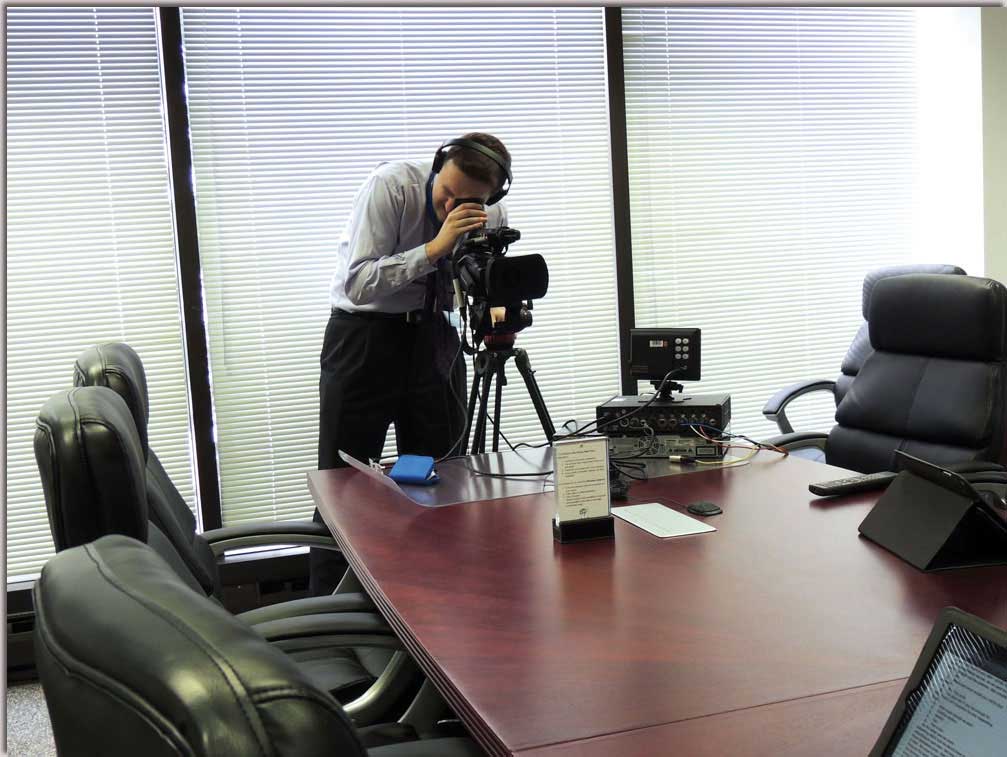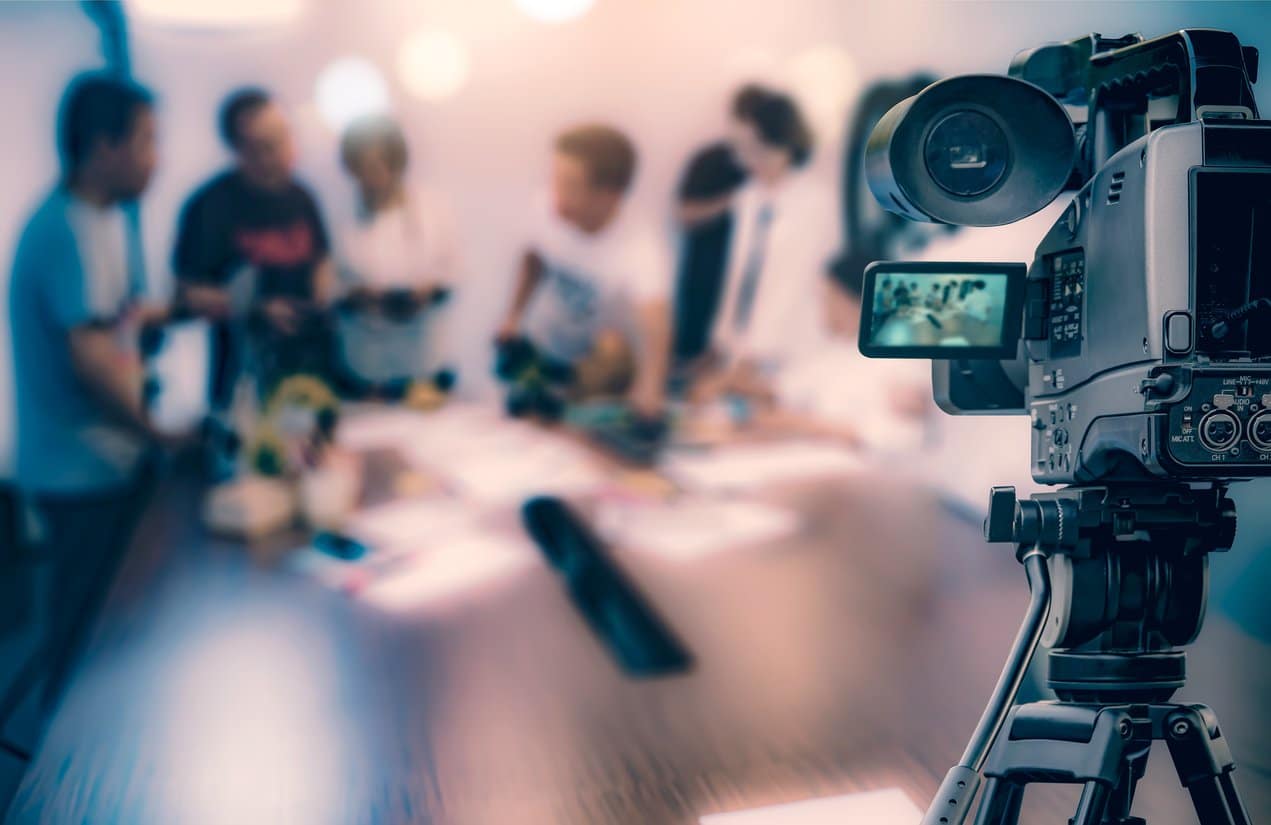Exploring the Devices of Lawful Videography: Introduction Its Operation in Safeguarding Genuine Aesthetic Testimony for Judicial Proceedings
In the realm of judicial proceedings, the duty of legal videography stands as a cornerstone in maintaining and providing visual proof. As technology proceeds to breakthrough, the systems behind lawful videography have actually ended up being increasingly intricate, providing an essential layer of credibility to testaments caught on video. By diving right into the functional details of legal videography, one can uncover the meticulous procedures that protect the integrity of aesthetic evidence presented in court rooms - Legal Videography. This expedition not only loses light on the historical development of lawful videography however additionally hints at the future fads that may better reinvent just how aesthetic statements are promoted in the realm of justice.
Historic Evolution of Lawful Videography
Analyzing the historical development of lawful videography reveals a considerable makeover in the capturing and discussion of aesthetic evidence within the lawful landscape. In the past, lawful proceedings heavily counted on composed pictures and transcripts to record events and give evidence. With the introduction of video clip innovation, the lawful industry experienced a paradigm shift in how visual testament was captured and presented.
The evolution of legal videography can be traced back to the late 20th century when advancements in video recording equipment made it more easily accessible for use in courts. This technological improvement not just boosted the precision and integrity of aesthetic proof yet additionally revolutionized the means instances existed to courts and juries (Legal Videography). Attorneys started to acknowledge the influential power of video clip recordings in conveying feelings, nuances, and non-verbal hints that written transcripts or photographs alone can not record properly

Innovation Developments in Video Documents
What vital technical innovations have revolutionized video clip paperwork in the lawful area? The legal area has seen considerable developments in video clip documentation technology that have actually improved the authenticity and integrity of aesthetic proof in judicial proceedings. Among the vital advancements is high-def (HD) video clip recording capabilities, which provide crystal-clear photos and sharp information that are critical for properly capturing testimonies, facial expressions, and various other visual hints. Furthermore, the combination of timestamping and metadata features in video clip documentation tools has made it possible for exact documentation of when and where the video clip was tape-recorded, guaranteeing the honesty of the evidence offered in court.
In addition, developments in video clip encryption and watermarking innovations have boosted the safety and security and tamper-proof nature of video clip proof, securing it against unapproved alterations or tampering. The arrival of cloud storage space services and remote gain access to capabilities has streamlined the storage, retrieval, and sharing of video evidence, assisting in seamless cooperation amongst lawful specialists and making certain reliable accessibility to crucial aesthetic testaments when needed. These technical innovations in video documents have undoubtedly revolutionized the lawful area, improving the precision, integrity, and admissibility of aesthetic evidence in judicial proceedings.
Function of Lawful Videographers in Court Room Setups
The development of video documentation technology in the lawful area has actually necessitated an important duty for legal videographers in court setups, ensuring the stability and reliability of visual statements offered during judicial procedures. Lawful videographers play a basic function in recording and maintaining exact visual evidence that can be crucial in court cases. Their obligation encompasses establishing up devices, videotaping process, and producing high-grade video clips that precisely show the events in the court.
In courtroom settings, lawful videographers should comply with strict standards and standards to maintain the credibility of the aesthetic record. They have to have a keen eye for information and an extensive understanding of legal procedures to make certain that the video they catch is a true representation of the events that transpired. In addition, legal videographers usually function carefully with lawful groups to make certain that the video evidence aligns with the instance's needs and can be properly presented in court to sustain the legal disagreements being made. On the whole, the role of lawful videographers in court room settings is crucial in upholding the principles of justice and making certain the openness of legal process.

Ensuring Admissibility and Integrity of Video Clip Proof
To maintain the reputation of aesthetic proof provided in legal process, guaranteeing the admissibility and integrity of video clip evidence is a critical duty for legal videographers. Admissibility refers to the approval of proof by the court, and for video clip proof to be permissible, it should fulfill particular requirements. Legal videographers play a crucial function in making certain that the videos they capture follow the rules of evidence, such as authenticity, relevance, and integrity.
Integrity of video evidence involves preserving the creativity and precision of the footage from the time it is tape-recorded until it exists in court. This consists of firmly storing the video clip documents, recording the chain of protection, and protecting against any type of tampering or alterations. Lawful videographers must stick to strict procedures to guarantee the honesty of the video evidence and protect against any type of obstacles to its authenticity.
Future Trends in Legal Videography
Provided the raising dependence on technology in legal proceedings, lawful videographers are poised to welcome innovative advancements shaping the future of visual testimony capture and discussion. Among the famous trends imminent is the assimilation of online truth view it now (VR) and boosted reality (AR) technologies into legal videography. These technologies have the prospective to transform exactly how aesthetic proof is presented in court rooms, enabling courts and courts to submerse themselves in the scene of the crime or event.
Moreover, making use of expert system (AI) formulas for video clip evaluation is anticipated to streamline the procedure of evaluating and assessing large quantities of video clip footage. AI can assist in determining essential minutes, abnormalities, and patterns within videos, boosting the effectiveness of legal investigations.

Final Thought
Finally, legal videography has played an important role in providing genuine visual proof for judicial procedures. With technological improvements and the knowledge of legal videographers, the stability and admissibility of video proof are made sure in courtroom settings. As legal videography proceeds to evolve, it will be vital to support requirements that preserve the accuracy and reliability of aesthetic testimony for the future of lawful proceedings.
Examining the historic progression of legal videography reveals a considerable change in the catching and presentation of visual proof within the legal landscape.The development of video clip documentation innovation in the legal area has required an essential function for legal videographers in courtroom settings, ensuring the integrity and reliability of aesthetic statements presented throughout judicial procedures. In addition, lawful videographers commonly work closely with legal groups to ensure that the video clip proof straightens with the case's demands and can be properly provided in court to sustain the legal arguments being made.To keep the credibility of aesthetic evidence presented in legal process, ensuring the admissibility and address integrity of video evidence is an important duty for legal videographers. As legal videography proceeds to progress, it will certainly be essential to promote requirements that maintain the precision and reliability of visual testimony for the future of legal proceedings.